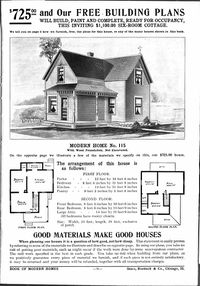Sears was the most important retailer in America - Why has it collapsed
Sears had been a prominent retail, mail order and conglomerate in the United States since 1886. The company first become prominent when it revolutionized the mail order business. Next it became a ubiquitous retailer that existed first on the main streets in downtowns and then moved to the fast growing malls in the 1960s and 70. They 1970s and 1980s, saw another transformation. The company's reach extended beyond the mall to insurance, credit cards, and even stock brokerages. In the 2000s, Sears tried to redefine itself again by becoming online retailer. Unfortunately, this last transformation has been disastrous. While the fortunes of Sears have ebbed and flowed over the years, Sears is currently in free fall. Thousands of employees have been laid off and hundreds of stores have already been closed. It's not clear that Sears can survive in any form.
Sears' collapse has been tied to American consumers shift away from America's malls, the noticeable decline of Sears stores, the failure to adapt to the internet age, the rise of Amazon and the leadership of hedge fund manager Eddie Lampert. It is ironic that the company that defined the mail order business has been doomed by its failure to adapt to the NEW internet based mail order business.
The Irony of Sears
While Sears was started in 1886 by Richard W. Sears and Alvah C. Roebuck, it was not until Julius Rosenberg took over management of the company in 1895 that Sears became the preeminent mail order company in the world. The growing infrastructure of the United States allowed Sears to expand both its catalog offerings and its reach into America.[1]Instead of just selling things Americans needed in their homes, it even sold 40,000 homes through its catalog from 1908-1945. [2]
Starting in 1924, the mail order business began to slow down and Sears began to shift to retail stores. By 1929, Sears had already created 300 retail stores across the country. The push to retail had been led by a former U.S. Army supply officer, Robert Wood.[3] Despite the Great Depression, Sears continued to expand across the country despite serious problems with its mail order business.[4] By the 1950s, Sears was the largest retailer in America.
References
- Jump up ↑ Vicki Howard, The Rise and Fall of Sears, Smithsonianmag.com, July 25, 2017
- Jump up ↑ Nancy Mitchell, "Built from a Kit: A Brief History of Sears Catalog Homes," Apartment Therapy, Jan 18, 2017
- Jump up ↑ "Sears, Roebuck & Co." www.encyclopedia.chicagohistory.org
- Jump up ↑ Elizabeth Huwe, THE STORY OF SEARS, ROEBUCK & COMPANY: History, and how a company aided World War II victory gardeners.
